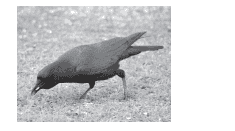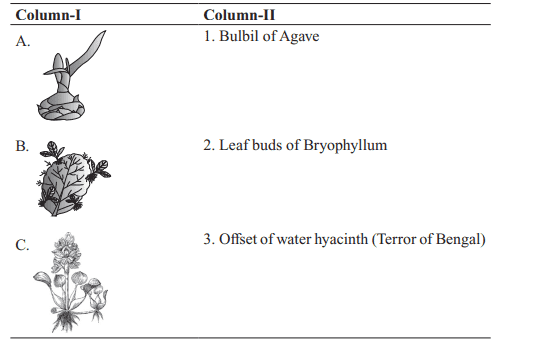1. Cell division is synonymous with reproduction in
a) Plants and fungi
b) Animal and plant
c) Protista and monera
d) Monera and algae
Explanation: Protista and monera
2. Binary fi ssion is seen in
a) Amoeba
b) Paramecium
c) Vorticella
d) All of these
Explanation: All of these
3.Which of these organisms show budding?
a) Yeast
b) Hydra
c) Sponge
d) All of these
Explanation: All of these
4. Find the false statement.
(A) In yeast unequal division leads to bud formation.
(B) When off spring is produced by a single parent with or without the involvement of gamete
formation, the reproduction is asexual.
(C) Size of crows and parrots are not very diff erent yet their life span shows a wide difference.
(D) In binary fission cell divides in unequal parts.
a) Only B and D
b) Only C
c) Only D
d) Only A and B
Explanation: Only D
5. The approximate life span of the organism shown in the given diagram is

a) 5 years
b) 15 years
c) 25 years
d) 50 years
Explanation: 15 years
6. Match column-I (Organism) with column-II (reproductive structure).

a) A : 1, B : 2, C : 3, D : 4
b) A : 4, B : 1, C : 3, D : 2
c) A : 1, B : 3, C : 4, D : 2
d) A : 2, B : 1, C : 4, D : 3
Explanation: A : 1, B : 2, C : 3, D : 4
7. Select the incorrect statement.
a) Members of the Kingdom fungi and simple plants such as algae reproduce through special
asexual reproductive structures.
b) Zoospores are generally microscopic motile structures.
c) Zoospores are usually macroscopic motile structures.
d) Clones are morphologically and genetically similar individuals.
Explanation: "Zoospores are usually macroscopic motile structures". This is incorrect statement.
8. What are the units of vegetative propagation in plants?
a) Runners and rhizomes
b) Suckers and bulbs
c) Tuber and offset
d) All of these
Explanation: All of these
9. In plants, the units of vegetative propagation are capable of giving rise to new offspring. These
structures are called
a) Zoospores
b) Asexual spores
c) Vegetative propagules
d) Rhizomes
Explanation: Vegetative propagules
10. Match Column-I (Structure) with Column-II (Name of structure and its parent plant)

a) A:2, B:1, C:3
b) A:1. B:2, C:3
c) A:3, B:2, C:1
d) A:2, B:3, C:1
Explanation: A:1. B:2, C:3